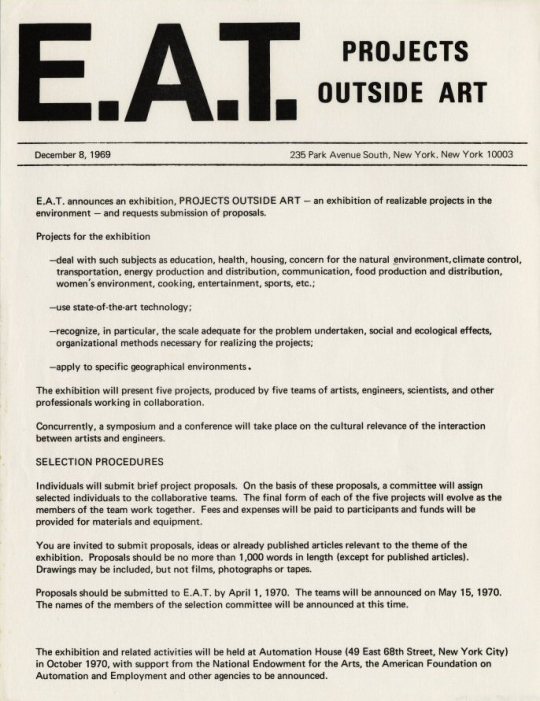Text
Art Nouveau
Art Nouveau was a style that took Europe by storm. Generating enthusiasts in the decorative and graphic arts and architecture throughout Europe and beyond, Art Nouveau appeared in a wide variety of strands, and, consequently, it is known by various names, such as the Glasgow Style, or, in the German-speaking world, Jugendstil. Art Nouveau was aimed at modernizing design, seeking to escape the eclectic historical styles that had previously been popular. Artists drew inspiration from both organic and geometric forms, evolving elegant designs that united flowing, natural forms resembling the stems and blossoms of plants. The emphasis on linear contours took precedence over color, which was usually represented with hues such as muted greens, browns, yellows, and blues. The movement was committed to abolishing the traditional hierarchy of the arts, which viewed the so-called liberal arts, such as painting and sculpture, as superior to craft-based decorative arts, and ultimately it had far more influence on the latter. The style went out of fashion for the most part long before the First World War, paving the way for the development of what we now know as Art Deco in the 1920s, but it experienced a popular revival in the 1960s, and it is now seen as an important predecessor - if not an integral component - of modernism.

0 notes
Text
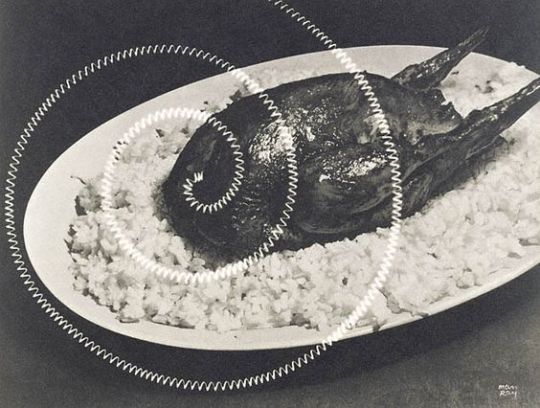
Cuisine (Kitchen): From the Portfolio Electricite 1931 (History of Art: Man Ray)
0 notes
Text
cookbook layout
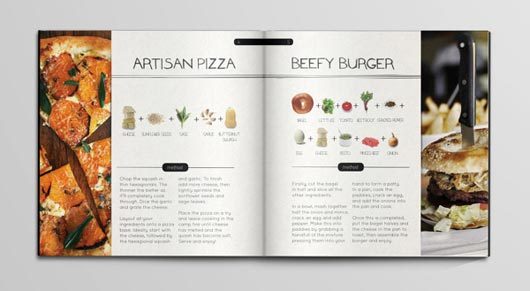
modern style. ingredients using illustration
2 notes
·
View notes
Text
Salvador Dali fruit watercolours

They are a mixture of watercolour, gouache, printer's ink and 19th Century stipple engraving. Dali said of his works: "I see the human form in trees, animals: the animal and vegetable in the human. My art shows the metamorphosis that takes place."
The "concept of illusionism" and metamorphosis are central to the collection, the auctioneer said. Dali claimed to have had the ability to see multiple meanings and patterns in single images, recalling a childhood ability to read shapes in the clouds of a summer storm.
0 notes
Photo

LOCATION Jersey, Channel Islands
CLIENT Jersey Waterfront Enterprise Road
SIZE 250m2
YEAR 1997
Although modest and economical, this small building has become a local landmark, a waterfront icon in the spirit of Alsop's Cardiff Bay Visitor Centre. The building replaced a very mundane café, dating from the 1940s. La Frégate (designed in conjunction with locally-based Mason Design Partnership) seeks to rekindle the elegance and style of the earlier seaside architecture of St Helier and is intended as part of an ongoing development and improvement programme for the town's waterfront, including new gardens, hotel, housing and leisure complex.
The site is in front of a new promenade, close to the town centre - La Frégate is as much a local as a tourist amenity. 'La Frégate' because the steel-framed building looks like a ship and was constructed in a shipyard. Its ship-lap timber cladding completes the illusion of a beached fishing boat, but the dynamic boat-like form is as contemporary as it is allusive.
Inside, the building is a sleek, toplit space, seating 70, with inset glass cones providing shafts of strong colour and fully glazed end walls offering striking views out. An external timber deck provides seating for a further 120 people.
The project addresses the difficult issue of establishing a new architecture of leisure and entertainment, without retreating into historicist pastiche.
-Will Alsop
0 notes
Link
0 notes
Photo
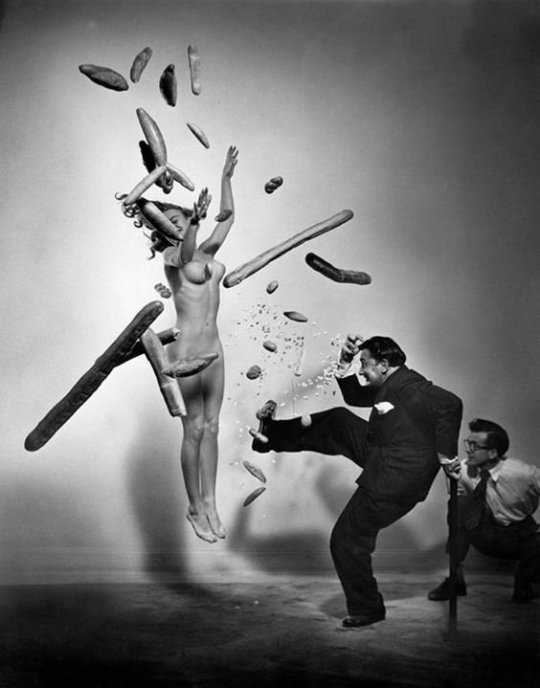
You mean, this isn’t what they meant when they said “fast food?” #SalvadorDali #PhilippeHalsman #NationalFastFoodDay
0 notes
Photo

SPIKY CHANDELIER
United Kingdom
2009
PROJECT BY NIGEL COATES
LONDON, UNITED KINGDOM
0 notes
Photo
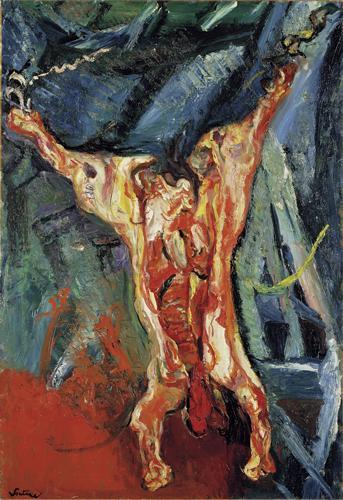

Chaim Soutine's Beef Carcass Paintings
Oh, heck, how about another creepy carcass? Here's Chaim Soutine's "Side of Beef," which was apparently a partial inspiration for Francis Bacon's "Figure with Meat."
As carcasses go, there's something almost jaunty about this one. I suppose this has to do with strangely suspended—almost levitating—quality of it... Yellow legs reaching up with a cheerful sort of rigor mortis into that deep blue field.
Here's what the online Encyclopedia Britannica has to say about Soutine:
[His] highly individualistic style, characterized by the use of thick impasto, agitated brushwork, convulsive compositional rhythms, and the presence of disturbing psychological content, is closely related to early 20th-century Expressionism.
Another Soutine "still life" (doesn't seem quite the right term) of a beef carcass. It's called Bœuf écorché. I suppose that must mean something like slaughtered beef, but I think "écorché" also means "tormented":
A bit less jaunty... Although painted in 1925, this somehow screams Guantanomo Bay.
0 notes
Photo
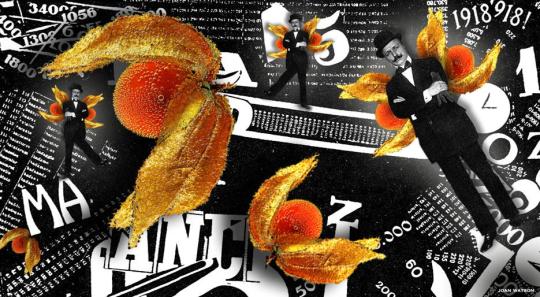
DINING WITH MARINETTI: THE MANIFESTO OF FUTURIST CUISINE
On December 28th 1930, Turin newspaper La Gazzetta del Popolo published a full-page Manifesto of Futurist Cuisine, from the mind and the pen of Filippo Tommaso Marinetti. He was a poet and the spiritual father of the futurist movement, started in 1909 aiming to revolutionize art, literature, music, theatre, dance, and food, rejecting the styles of the past to dynamically embrace modern life.
The futurists delivered a jolt to all the practical and intellectual activities that up to that point had governed the cultural, civil, and political scene. The paradoxes of gastronomy, like those of aesthetics, aimed at moral evolution: the subject needed a good shake to reawaken its spirit.
Futurist cuisine, expressly defined by Marinetti as a true “revolution of cuisine”, was described in a manual filled with recipes, menus, and suggestions. At the time people made do with little, and the food industry, except for very few brands, remained at the artisanal level. Rereading the futurist gastronomy manifesto today, we can see that some of Marinetti’s suggestions indeed found application. Some examples include additives and preservatives added to food, or using technological tools in the kitchen to mince, pulverize, and emulsify. The recipes that then seemed so revolutionary were in some cases a preview of Italian-style Nouvelle Cuisine.
The forerunner chef of futurist cuisine was the Frenchman Jules Maincave, who joined Futurism in 1914, bored with the “traditional method of monotonous […] mixtures to the point of stupidity”, and proposed “bringing together elements separated by biases that have no true foundation: fillet of mutton and shrimp sauce, prime veal and absyinthe, banana and Gruyère, herring and strawberry gelatin."
Marinetti waged a famous and unpopular war against "the starchy food” (pasta), responsible for generating in habitual consumers “sluggishness, pessimism, nostalgic inactivity, and neutralism […] a ball and relic that Italians put in their stomachs like convicts or archaeologists." In addition to condemning pasta and absolving rice, the Manifesto predicted the abolition of the knife and fork and traditional condiments, encouraging music, poetry, and perfume to be paired with meals. The futurists also strove to Italianize a few terms of foreign origin: the cocktail thus became the “polibibita” (multi-drink), a sandwich was called a “traidue” (between-the-two), dessert was “peralzarsi” (for-standing-up) and a picnic became “pranzoalsole” (lunch-in-the-sun).
The futurists’ greatest success with the public and the press was with their “aerobanchetti” (aerobanquets). A memorable one was organized in Bologna in 1931. There was no tablecloth, replaced by sheets of aluminum and metal plates. The table was shaped like an airplane, with two appendages in the middle representing the wings, with a motorcycle as the engine. After the dish called “spicy airport” (Olivier salad), “rising thunder” (orange risotto) was served, during which Marinetti proclaimed, “we’re flying at 8000 m – feel how this nourishes and favors your stomach.” From the tables there then arose a cry: “We want fuel!”, singing the praises of the Lambrusco wine, kept in gas cans. Also served at the meal were: “wake-up for the stomach”, “Tyrrhenian algae foam”, and “Steel chicken” (roast stuffed with silvery non-pareils).
Futurist cuisine and rules for the perfect lunch
1. An original harmony of the table (crystal ware, crockery and glassware, decoration) with the flavors and colors of the dishes.
2. Utter originality in the dishes.
3. The invention of flexible flavorful combinations (edible plastic complex), whose original harmony of form and color feeds the eyes and awakens the imagination before tempting the lips.
4. The abolition of knife and fork in favor of flexible combinations that can deliver prelabial tactile enjoyment.
5. The use of the art of perfumery to enhance taste. Each dish must be preceded by a perfume that will be removed from the table using fans.
6. A limited use of music in the intervals between one dish and the next, so as not to distract the sensitivity of the tongue and the palate and serves to eliminate the flavor enjoyed, restoring a clean slate for tasting.
7. Abolition of oratory and politics at the table.
8. Measured use of poetry and music as unexpected ingredients to awaken the flavors of a given dish with their sensual intensity.
9. Rapid presentation between one dish and the next, before the nostrils and the eyes of the dinner guests, of the few dishes that they will eat, and others that they will not, to facilitate curiosity, surprise, and imagination.
10. The creation of simultaneous and changing morsels that contain ten, twenty flavors to be tasted in a few moments. These morsels will also serve the analog function […] of summarizing an entire area of life, the course of a love affair, or an entire voyage to the Far East.
11. A supply of scientific tools in the kitchen: ozone machines that will impart the scent of ozone to liquids and dishes; lamps to emit ultraviolet rays; electrolyzers to decompose extracted juices etc. in order to use a known product to achieve a new product with new properties; colloidal mills that can be used to pulverize flours, dried fruit and nuts, spices, etc.; distilling devices using ordinary pressure or a vacuum, centrifuge autoclaves, dialysis machines.
The use of this equipment must be scientific, avoiding the error of allowing dishes to cook in steam pressure cookers, which leads to the destruction of active substances (vitamins, etc.) due to the high temperatures. Chemical indicators will check if the sauce is acidic or basic and will serve to correct any errors that may occur: lack of salt, too much vinegar, too much pepper, too sweet."
This story is taken from the book Tacuinum dè Eccellentissimi, ali&no publisher.
1 note
·
View note
Video
youtube
The opening metaphor--the cloud passing over the moon, followed by the eyeball event--signals many more metaphors to come. In the beginning, however, this particular image may be a warning to the viewer of the film: Our regular way of seeing will be assaulted. It may also be a key. If we know what the opening metaphor suggests, then we may know what all the other metaphors suggest as well. Or at least, we know that they intend to mean something. The filmmakers are instructing us in the grammar of this film.
The bicyclist in the beginning is supplanted by an afterimage. This suggests memory and obsession at work in the everyday, invoking the experience of daydreaming even while riding a bike. But in this reverie, he crashes his bike on the sidewalk and is, presumably, injured or dead as a result.
The woman assembles the clothes of the man on her bed, then concentrates. This suggests a sympathetic or conjuring magic--that is, if we want something enough, and will it to be so, something will happen.
We see a man looking at his hand, which has an ant hole with ants emerging and crawling around his palm. This imagery suggests the feeling of hand going to sleep, but presents it in terms of public, or waking world, understanding. How is a feeling explained? In this case, the film suggests that a hand fallen asleep but which now has blood returning to it feels like having ants under the skin. The film simply makes the leap from linguistics to the physical world, from words to things, from "like" to "is." This invokes the later Magritte observation, This is not a pipe, but goes farther: if we say that there are ants under our skin, then this is the fruit of that statement. There should be ants under the skin. This is honest language. Ants are ants. And, as such, I am likely to take your complaint more seriously when you say your hand feels like it has ants inside it. Or pins and needles. Or that your heart is breaking.
The people outside the window, photographed from above, mimic the look of the ants. As the film shows us, they are swarming around a severed hand. The hand fallen asleep idea is still operating, but now the ants are people.
Later we see the woman's armpit hair become a sea urchin and then the man's beard. While we might consider, given the context, that the filmmakers were suggesting intimate hair of another kind here, we see the woman having an epiphany, and perhaps the man as well. The profundity of sexuality--all the man's words speak only to the hair, are the hair--shows itself.
The man begins to assault the woman, and we see him fondling the woman's breasts. While much imagery leads us to this moment, the filmmakers boldly lead us elsewhere. The breasts, with his eyes closed, feel to the man like buttocks. We see in this moment a pragmatic, rather than romantic, statement on sexuality.
The man considers sexually assaulting the woman further. But as he walks toward her, suddenly the weight of his conscience and background all come to bear. This is one the most suggestive and complex images in the film. In walking toward her, suddenly he is carrying two monks (the Church), a piano (beauty), and a dead horse (base sensuality and desire, complicated and illuminated both by images of strength, blood, and death). In other words, he brings some baggage to the moment.
As the woman leaves, the man tries to follow, and she traps his hand in the door, signaling the return of the ants, or rather, showing that his circulation to the arm has again been cut off.
As the doorbell rings, we get another example of moving from "like" to "is." The doorbell sounds like someone shaking a martini--so that is what it becomes. This is like the hand fallen asleep.
Throughout the film, we see various devices whose job is to measure the regular world in some way thrown aside. We see a tape measure, for example, thrown out the window, and when a wrist is raised to show a watch, it is pushed down and out of the frame.
In a moment of desperation, the woman wishes she had something to defend herself, and so a gun suddenly appears. This echoes her earlier attempt at wishing for something, as she willed the man to be alive and in her bed again.
Suggesting the elements of a morality play, we see various images of crucifixion after the attempted assault. There is a Christ-like image hung on the tennis racquet, and we see the same figure suggested as the man stands as a dunce in corner.
If death can somehow be good, be redemptive, how then does this man understand it? If he has seen sexuality as good, then the equation is made in a startling leap: death is sensual. Good equals good. The man, then, dies deliciously, sensuously, with his falling hands going down a nude woman's back. And in this moment, as well, he is in another place, an anti-place: This is the forest, suddenly, not the city.
We see a close-up of a moth with a skull image in its markings, followed by a shot of the man--who also has a skull inside him, as suggested by his gaunt features. This perhaps suggests flight, or the flight into death, connecting the morbidity of the skull with the wings of the moth.
Regular or traditional measures continue to be discounted. Time and distance don't rule this world. The woman goes through her door, but instead of finding what she has always found before, this time the door leads her to the beach. And then suddenly, by an inserted information placard, it is spring, "au printemps."
Even the two people, finally, are only halfway seen at the end, stuck in the sand and unmoving as the film searches for its own final measure.
Octavio Paz, in Labyrinths of Solitude, would many years later observe that passionate love, which is after all obsession between two people, is an antisocial act. It is therefore not ours to understand, and has no single set of rules. As such, it is dangerous, not in the public interest, and for that reason a crime. This film poses the question, Can there truly be an honest film about two people in love?
0 notes
Text
The Belly of an Architect (1987) | Peter Greenaway
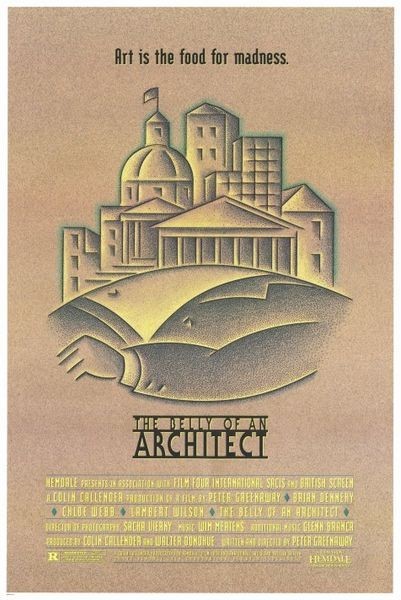
youtube
0 notes
Text
Cedric Price: re:cp
Cedric Price has claimed that cooking is a good metaphor for architecture, where design ideas can be developed, constructed-and given accurate user feddback-within a single sitting. Now, Price has collected some of his finest architectural recipes in the first publication on his work for almost 20 years. One of Britain's most influential architectural thinkers, Price has inspired many generations of architects. Among his realised projects are the Interaction Trust Community Centre, London, the Olympic Information Complex for the Munich Olympic Village, and an aviary for London Zoo, designed with Lord Snowdon and Frank Newby in 1961. Price's reputation and influence rest equally, however, on the radicalism of his ides. He argues against the production of permanent, specific spaces for particular functions and seeks to analyse the motivations that might give rise to a structure in the first place. "Technology is the answer," he has said, "buy what was the question?"
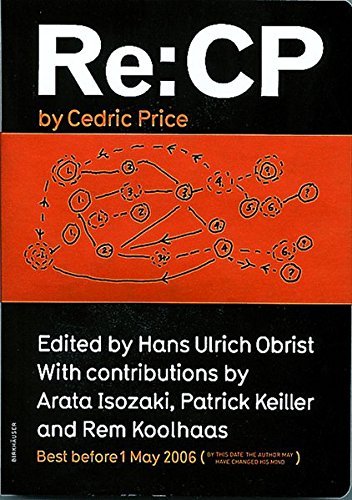
0 notes
Photo
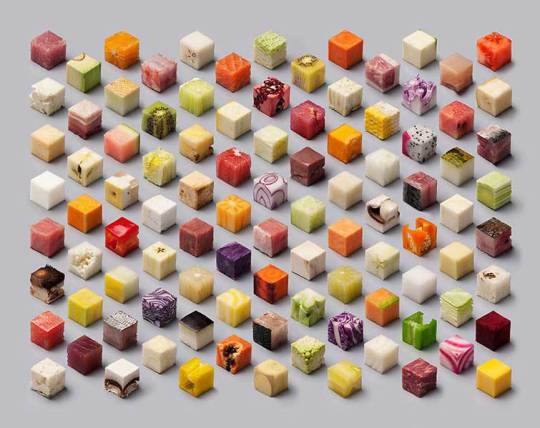
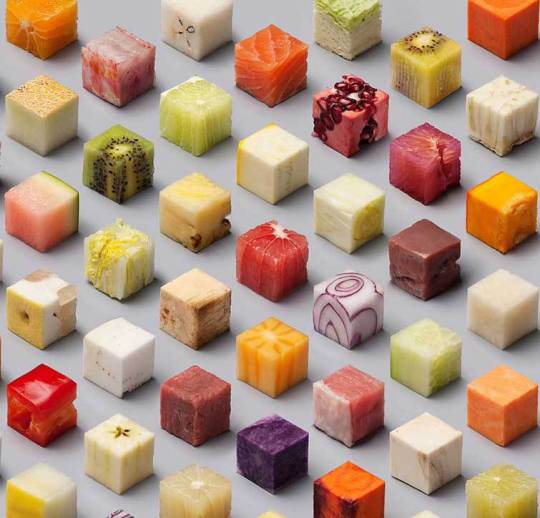
Artists Cut Raw Food Into 98 Perfect Cubes .
Looking like a cross between futurist food and some sort of rations, Dutch artists Lernert and Sander have precisely cut 98 different raw foods into perfect cubes. Measuring 2.5 x 2.5 x 2.5, the cubes look like they were cut by a machine they are so precisely done. The image of all of the foods was sued by Dutch newspaper de Volkskrant to promote their photography special that was food themed. The cubes offer a never before look at food, and to think of the agonising accuracy required for such a feat makes it more impressive.
1 note
·
View note
Text
Futrist aerobanquet
Futurist Aerobanquet
X-ray coat check, modern art departure lounge, high kicking air stewardesses and an in-flight explosion... presented in collaboration with Bompas and Parr and Tate Modern.

0 notes
Text
Poems
I travel your body, like the world,
your belly is a plaza full of sun,
your breasted two churches where blood,
performs its own, parrallel rites,
my glances cover you like ivy,
you are a city the sea assaults,
a stretch of ramparts split by the light
in two halves the color of peaches,
a domain of salt, rocks and birds,
under the rule of oblivious noon.
Octavio Paz <sunstone>
0 notes
